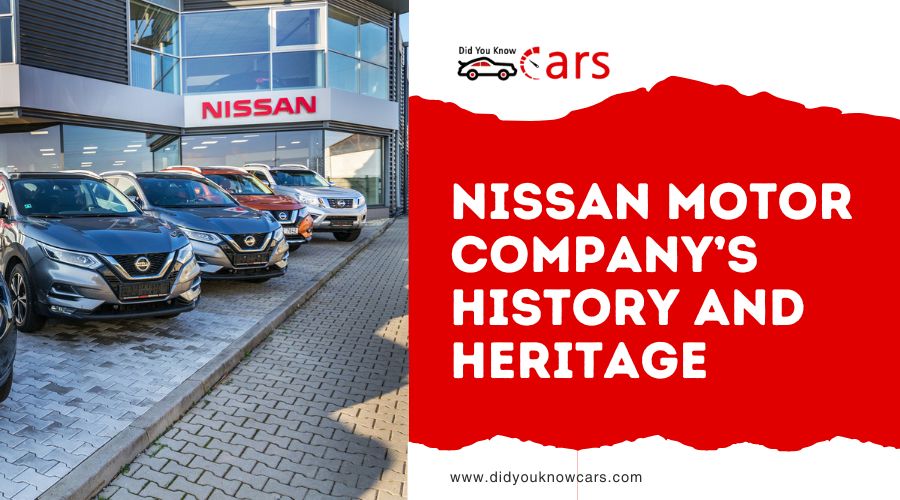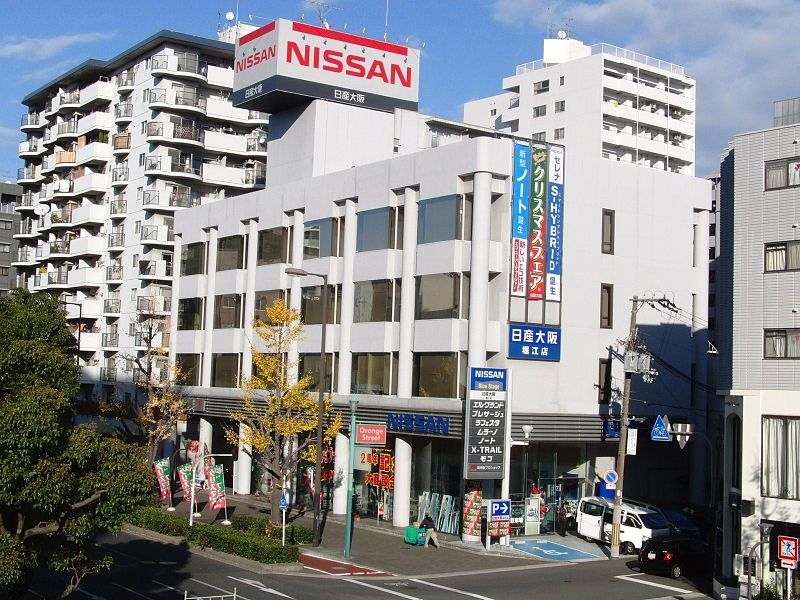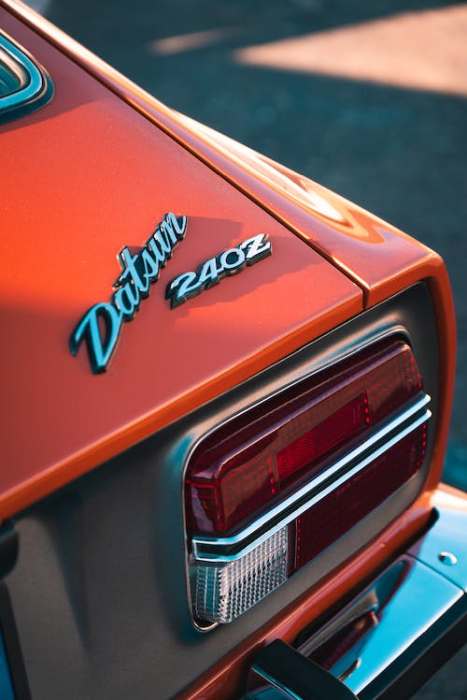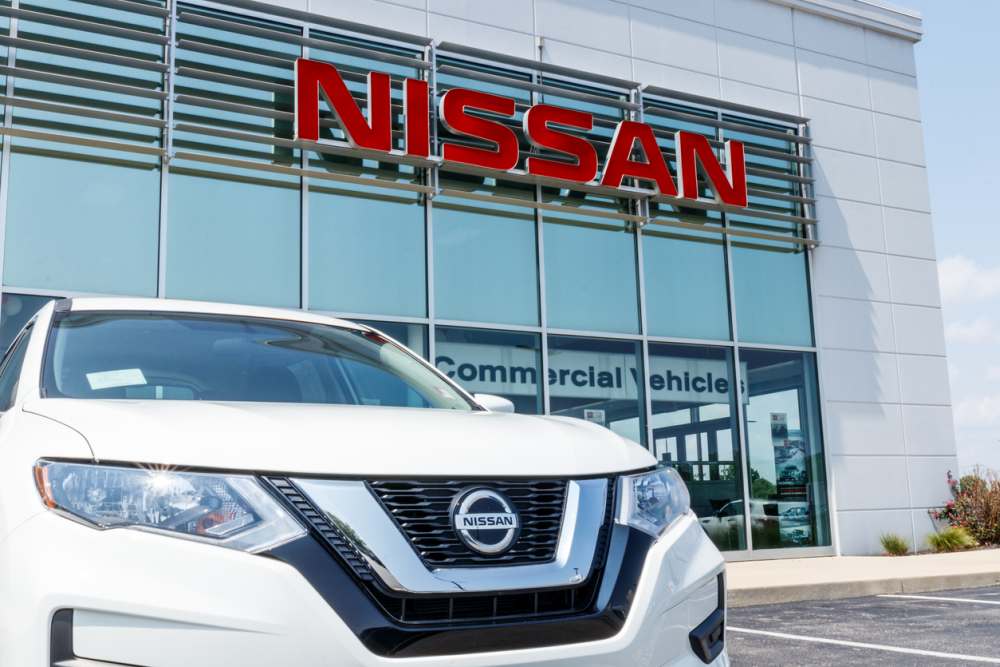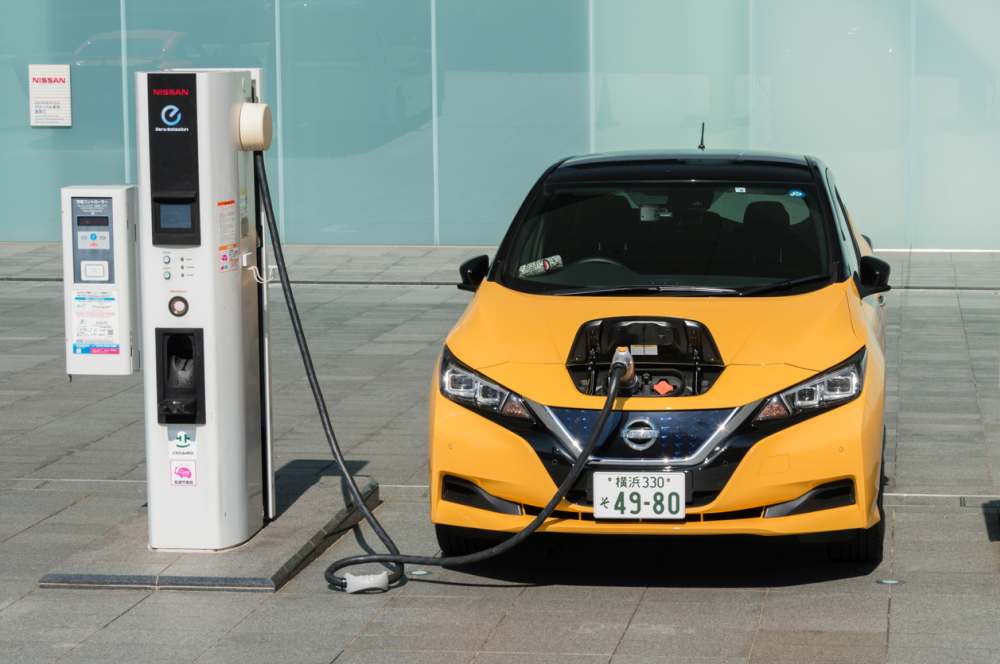Nissan Motor Company, one of the titans in the global automotive industry, has a rich history that spans over a century. Nissan has established itself as a key player in the automotive world because of its innovative approach and commitment to quality. This article delves into the history, innovations, and products of Nissan, offering a comprehensive overview of this automotive giant.
How Big is Nissan?
Nissan Motor Co. Ltd. Is a renowned Japanese car manufacturer based in Yokohama, Japan. It is known for its Nissan and Infiniti brands and previously for the Datsun brand. It also produces performance-enhanced vehicles under the Nismo and Autech brands.
In 2017, Nissan ranked as the world’s sixth largest automaker, following giants like Toyota and Volkswagen Group. In 2014, it was the top car manufacturer in North America. By 2022, with a revenue of $78 billion, Nissan became the 9th largest automobile maker globally. It’s also the leading Japanese brand in several key markets, including China, Russia, and Mexico.
As of April 2018, Nissan emerged as the world’s largest electric vehicle (EV) manufacturer, boasting over 320,000 all-electric vehicle sales worldwide. Among its electric lineup, the Nissan LEAF stands out, being the second best-selling electric car globally, right after the Tesla Model 3.
Since 1999, Nissan has been a key player in the Renault–Nissan–Mitsubishi Alliance, which includes Mitsubishi Motors from Japan (joined in 2016) and Renault from France. As of November 2023, Renault has a 15% voting stake in Nissan, and Nissan holds a similar stake in Renault. Additionally, since October 2016, Nissan has had a 34% controlling stake in Mitsubishi Motors.
History of Nissan Motor Company
The Early Years: From Datsun to Nissan
In 1911, Masujiro Hashimoto founded Kwaishinsha Motor Car Works in Tokyo’s Azabu-Hiroo district. Just three years later, in 1914, the company rolled out its first car, the DAT, named using an acronym of the surnames of the company’s key investors: Kenjiro Den, Rokuro Aoyama, and Meitaro Takeuchi.
The company underwent several name changes, first becoming Kaishinsha Motorcar Co. in 1918 and later transforming into DAT Jidosha & Co. in 1925. Initially, the company focused more on trucks due to the limited market for passenger cars and the need for vehicles in disaster recovery after the 1923 Great Kantō earthquake.
During World War I, the company paused commercial operations and contributed to the war effort. In 1926, DAT Motors merged with Jitsuyo Jidosha Co., an Osaka-based manufacturer known for practical and utility vehicles, forming DAT Jidosha Seizo Co.
The Formation of Nihon Sangyo
In 1928, Yoshisuke Aikawa, often referred to as Gisuke Ayukawa established a holding company called Nihon Sangyo, which means Japan Industries. The name ‘Nissan’ came about in the 1930s as a shorthand version of Nihon Sangyo, used on the Tokyo Stock Exchange. This period marked Nissan’s expansion into various industries, including owning companies like Tobata Casting and Hitachi, though they didn’t start making cars until 1933.
The American engineer William R. Gorham, initially Kubota’s chief designer, played a crucial role in Nissan’s development. Influenced by Aikawa’s visit to Detroit in 1908 and Gorham’s expertise, Nissan adopted American automotive technology. When they began assembling larger vehicles under the Nissan brand in 1937, they used designs and equipment from the Graham-Paige Company, under whom they also had a licensing agreement.
Nissan’s zaibatsu, a large Japanese business conglomerate, grew to encompass 74 firms, becoming Japan’s fourth-largest during World War II.
The Birth of Datsun
In 1931, DAT released a new, smaller car named the Datsun Type 11, symbolizing the “Son of DAT.” However, in 1933, when the Nissan Group took control, they tweaked the name to “Datsun,” changing the final syllable to avoid the negative connotation of “son” in Japanese.
In 1933, the company was renamed Jidosha-Seizo Co., Ltd., and its headquarters were moved to Yokohama, setting the stage for its evolution into the Nissan we know today.
The Birth of Nissan Motor
In 1934, Aikawa spun off the automobile parts division of Tobata Casting to form a new subsidiary, Nissan Motor Co., Ltd. Initially, shareholders were skeptical about the automobile’s future in Japan, so Aikawa used funds from Nihon Industries to buy them out, making Nissan Motor a part of Nihon Sangyo and Hitachi.
That same year, Datsun, which was part of Nissan, began manufacturing Austin 7 cars under license. This venture marked the start of Datsun’s journey to international recognition, becoming a notable success story for Austin’s global licensing.
Pioneering Car Production in Japan and International Growth
Under the Nissan banner, the company embarked on an ambitious plan to become a major player in the automotive industry. Nissan’s early focus was on producing more affordable vehicles, making car ownership accessible to a broader segment of the Japanese population. They were among the first in Japan to adopt an integrated assembly system, a move that was revolutionary at the time.
Nissan also focused on developing vehicles specifically for the Japanese market, recognizing the unique needs and preferences of local consumers. This strategy proved to be a critical factor in the company’s early successes.
By 1935, Nissan had completed its Yokohama plant and began exporting Datsuns to various regions. This year also saw the first car roll off their integrated assembly line. Nissan diversified, producing trucks, airplanes, and engines for the Imperial Japanese Army. In 1937, the company moved its headquarters to Manchukuo, renaming itself Manchuria Heavy Industries Developing Co.
In 1940, Nissan began shipping knockdown kits for assembly to Dowa Jidosha Kogyo, a part of Manchuria Heavy Industries. By 1944, the company, now known as Nissan Heavy Industries, relocated its head office to Tokyo, a name it retained until 1949.
A Formal Agreement with Austin
In 1952, Nissan and Austin entered a formal agreement. Under this deal, Nissan would assemble and sell 2,000 Austin cars in Japan, sourced from partially assembled kits. Nissan committed to producing all Austin parts locally within three years, a goal it successfully achieved. This collaboration lasted until 1959, during which Nissan assembled and marketed Austin cars, incorporating Austin patents into its own Datsun models.
Venturing into Global Markets
In the 1950s, Nissan began aggressively pursuing opportunities in international markets. This move was part of Japan’s broader post-war economic strategy, which emphasized exports to drive economic recovery and growth. Nissan’s export strategy initially focused on Southeast Asia and Australia, but the real game-changer was entering the North American market.
Nissan’s entry into the United States in the late 1950s was a bold move. The U.S. automotive market was dominated by large American manufacturers, and Japanese cars were virtually unknown. In 1958, Nissan exported its first car, the Datsun 1000 Sedan, to the United States. Although initial sales were modest, it marked the beginning of Nissan’s long-term presence in one of the world’s largest automotive markets.
Advancements and Innovations
By 1966, Nissan had introduced the new A series engine, a significant advancement from Austin’s designs. In 1967, Nissan launched the revolutionary Nissan L engine, a four-cylinder overhead cam design that was entirely Nissan’s own creation. This engine was a key feature in the new Datsun 510 sedan and the Datsun 240Z sports car, both of which significantly boosted Nissan’s reputation globally.
- Datsun 510 (1968): Known as the “poor man’s BMW,” the Datsun 510 was a compact sedan that offered a blend of performance, affordability, and reliability. It appealed to a broad segment of consumers in the U.S., challenging the perception that Japanese cars were inferior. The 510’s success laid the groundwork for Nissan’s reputation in the American market.
- Datsun 240Z (1969): The introduction of the Datsun 240Z was a watershed moment for Nissan. This sports car combined style, performance, and affordability in a way that had not been seen before in the market. It quickly became a bestseller in the United States, earning critical acclaim and establishing Datsun/Nissan as a producer of desirable and high-quality vehicles.
The 1953 Nissan Labor Dispute
During the Korean War, Nissan was a key vehicle supplier for the U.S. Army. Post-war, amid widespread anti-communist sentiment in Japan, Nissan faced a tough labor dispute. Wage negotiations led to a lockout and the firing of several hundred workers. Despite government and U.S. intervention, the union was eventually defeated. A new labor agreement was formed, focusing on productivity, a strategy that played a crucial role in Nissan’s rapid expansion from 1955 to 1973.
Merger with Prince Motor Company
In 1966, Nissan merged with Prince Motor Company, a move that expanded its range with more upscale models like the Skyline and Gloria. While the Prince brand was eventually phased out, its legacy continued in Nissan’s lineup. The dealership network also evolved, with the Nissan Prince Shop transforming into Nissan Red Stage and later evolving again by 2007. The Skyline model transitioned into becoming part of the Infiniti G Series.
Expanding Manufacturing and Distribution
As demand for Nissan’s vehicles grew internationally, the company expanded its manufacturing and distribution network. In the 1970s, Nissan began establishing manufacturing plants outside Japan, starting with operations in Australia and Mexico. This expansion was not only a response to growing demand but also a strategic move to circumvent trade barriers and reduce shipping costs.
Brand Recognition and Market Adaptation
Nissan’s global growth was accompanied by a growing recognition of the Datsun brand. By 1970, Nissan became one of the world’s largest exporters of cars.
However, the company faced the challenge of adapting its vehicles to various markets. Following the 1973 oil crisis, there was a surge in demand for small, fuel-efficient cars, especially in the lucrative U.S. market. To cater to this new demand, Nissan ramped up production of its Nissan Sunny by establishing new factories across the globe. This expansion included Mexico (where Nissan Mexicana started in the early 1960s), Australia, New Zealand, Taiwan, the United States (Nissan Motor Manufacturing Corporation USA established in 1980), and South Africa.
Responding to the U.S. Market
In the U.S., Nissan and other Japanese automakers started building plants in the early 1980s in response to the 1964 “Chicken Tax” and the 1981 Voluntary Export Restraints. Nissan’s Smyrna assembly plant, which began construction in 1980, initially focused on trucks but later expanded to produce various car and SUV lines, including the Altima, Maxima, Rogue, Pathfinder, Infiniti QX60, and the LEAF electric car. Additional facilities included an engine plant in Tennessee and another assembly plant in Canton, Mississippi.
European and Other Global Ventures
In Europe, where Nissan was the best-selling Japanese brand by the early 1980s, the company considered expanding its Greek assembly plant, Teocar, to serve all of Europe. However, this plan didn’t materialize due to complications, and the plant was eventually closed. Nissan then entered a joint venture with Alfa Romeo in 1980 but eventually decided to establish its own plant in Sunderland, England, which became highly productive.
Expanding in Brazil, India, and China
In 2001, Nissan opened a manufacturing plant in Brazil. By 2005, operations had extended to India through Nissan Motor India Pvt. Ltd. In partnership with Renault, Nissan invested heavily in a Chennai facility, focusing on the Indian market and exports to Europe. Nissan has been active in the Middle East since 1957, with Saudi Arabia being its first market. In China, Nissan saw significant sales growth, leading to the expansion of its production base with Dongfeng-Nissan in Guangzhou.
Pioneering Moves in the World of Electric Vehicles (EVs)
Nissan has a long history with electric vehicles (EVs), dating back to 1946. The company made a significant impact in the EV market with the introduction of the Nissan Leaf in 2010. This plug-in battery electric car quickly became the world’s best-selling plug-in electric vehicle, holding that title for almost a decade.
The Leaf was part of a lineage that included earlier models like the Altra and the Hypermini. For a time, Nissan was the world’s largest electric vehicle manufacturer, boasting sales of over 320,000 all-electric vehicles by April 2018. This position was later overtaken by Tesla. In a move to further innovate in the EV space, Nissan announced in 2022 its plans to develop solid-state batteries for electric vehicles, signaling its ongoing commitment to advancing EV technology.
Challenges and Controversies
Financial Struggles and Recovery
Despite its successes, Nissan has faced significant challenges. In the late 1990s, Nissan Motor Company faced one of the most challenging periods in its history. The company, which had enjoyed decades of success and growth, found itself grappling with significant financial difficulties. Several factors contributed to this downturn:
- Economic Downturn: The Asian financial crisis of 1997 played a significant role in Nissan’s struggles. This economic turmoil affected many Asian economies, including Japan, leading to decreased domestic sales and disrupted export markets.
- Operational Inefficiencies: Nissan also struggled with internal issues, including operational inefficiencies and a heavy debt burden. The company had high production costs, a complex and inefficient network of suppliers, and an overly diverse and unprofitable product lineup.
- Competitive Pressure: Increasing competition from both domestic and international automakers exacerbated Nissan’s problems. Competitors were offering more innovative and cost-effective models, putting additional pressure on Nissan’s market share.
The Renault-Nissan Alliance
In 1999, in a bid to reverse its fortunes, Nissan entered into a strategic alliance with Renault, a major French automaker. This alliance was groundbreaking and one of the most significant in the automotive industry for several reasons:
Renault acquired a 36.8% stake in Nissan, while Nissan took a 15% non-voting stake in Renault. This structure allowed both companies to maintain their identities and operational independence while collaborating closely.
Carlos Ghosn, appointed as Nissan’s COO (later CEO), played a pivotal role in Nissan’s turnaround. Ghosn, known for his cost-cutting measures and restructuring expertise, implemented the Nissan Revival Plan (NRP).
Introduced in 1999, the NRP was a comprehensive restructuring program aimed at bringing Nissan back to profitability. Key elements of the NRP included closing unprofitable plants, reducing the workforce, cutting supplier costs, and reducing the company’s massive debt. The plan also involved streamlining Nissan’s vehicle lineup and focusing on profitable models.
Recovery and Results
The results of the Renault-Nissan Alliance and the implementation of the NRP were dramatic and swift. By the early 2000s, Nissan had returned to profitability much faster than industry analysts had predicted. The company’s debt was significantly reduced, and operating margins improved.
The alliance allowed Nissan and Renault to share technology and resources, leading to cost savings and enhanced innovation. This collaboration was particularly evident in areas like electric vehicle development and global platform sharing.
Post-recovery, Nissan focused on expanding its global footprint. The alliance with Renault opened up new markets and opportunities, particularly in Europe and emerging markets.
Ghosn Controversy
One of the most notable controversies in Nissan’s history involves Carlos Ghosn, the company’s former CEO, and architect of the company’s turnaround. He stepped down as CEO but remained chairman of the company in April 2017. The scandal surfaced in 2018 when Ghosn was arrested in Japan on charges of financial misconduct. He was then fired as chairman.
When he stepped down as CEO, Ghosn was replaced by his then-deputy Hiroto Saikawa, but Saikawa was followed also by allegations of improper payments received by him. These allegations raised serious questions about Nissan’s corporate governance and oversight mechanisms. The scandal had a significant impact on Nissan’s reputation and raised concerns among shareholders and partners. It led to a thorough review of corporate governance practices at Nissan.
The incident strained the relationship between Nissan and Renault, casting a shadow over the future of the alliance. It also prompted discussions in the business community about executive compensation and transparency in corporate governance.
Employee Layoffs
In late July 2019, Nissan announced plans to cut 12,500 jobs over three years following a dramatic 95% drop in net income. The company’s CEO at the time, Hiroto Saikawa, indicated that the majority of the job cuts would affect plant workers.
COVID-19 Pandemic Challenges
By May 2020, amidst the COVID-19 pandemic, Nissan revealed a strategy to reduce its production capacity by 20%. During mid-2020, the company also decided to close factories in Indonesia and Spain and to withdraw from the South Korean car market. This retreat included pulling out the Infiniti brand, with Nissan planning to manage service centers in South Korea for after-sales services like vehicle quality assurance for eight years.
In November 2020, Nissan reported a significant loss of $421 million, attributed to the pandemic and the fallout from the Carlos Ghosn scandal. A Nissan North America spokesperson mentioned the company’s previous strategy of prioritizing sales volume, which analysts believe was a policy driven by Ghosn.
Nissan’s Diverse Product Offerings
Nissan Motor Company offers a wide range of vehicles catering to various market segments and customer needs. Here’s an overview of Nissan’s diverse product lineup:
Passenger Cars
Nissan’s range of passenger cars is designed to meet the needs of a broad consumer base, from compact city cars to more luxurious sedans. Models like the Nissan Versa and Sentra are popular for their affordability and efficiency, making them ideal for everyday commuting. On the higher end, the Nissan Maxima offers a blend of luxury and performance, appealing to those seeking a more premium driving experience.
Sports Cars
Nissan has a storied history in the sports car segment, with models like the Nissan Z series and the GT-R. These cars are known for their impressive performance and have garnered a loyal following among car enthusiasts. The GT-R, nicknamed “Godzilla,” is a high-performance sports car competing with some of the world’s most renowned brands.
SUVs and Crossovers
The SUV and crossover segments have grown significantly, and Nissan has responded with a range of models to suit different tastes and needs. The Nissan Rogue and Murano offer comfort and versatility, ideal for families and those who need more space and utility. For a more rugged experience, the Nissan Pathfinder and Armada provide off-road capability along with spacious interiors.
Electric Vehicles (EVs)
Nissan is a pioneer in the electric vehicle market, with the Nissan Leaf being one of the world’s best-selling EVs. The Leaf has won acclaim for its zero-emission performance, practicality, and affordability. Nissan’s commitment to electrification is evident in its plans to expand its EV lineup, focusing on sustainable and eco-friendly transportation solutions.
Trucks and Commercial Vehicles
For those requiring vehicles for work and heavy-duty purposes, Nissan offers a range of trucks and commercial vehicles. The Nissan Frontier and Titan are notable pickups, offering power and durability for towing and hauling needs. Nissan’s commercial vans, like the NV200 and NV Cargo, are tailored for businesses requiring cargo space and utility.
Infiniti – The Luxury Division
Infiniti is Nissan’s luxury vehicle division, offering a range of premium cars and SUVs. Infiniti models are known for their luxury, performance, and advanced technology, competing with other luxury brands in the market. The Infiniti QX60 and Q50 are among the popular models in their lineup, offering luxury and performance.
Future Innovations
Nissan is continuously innovating its product offerings, with a focus on autonomous driving technology, advanced safety features, and further development of electric and hybrid vehicles. The company’s vision for the future includes a strong commitment to sustainability and cutting-edge technology, ensuring that its product lineup evolves with changing consumer preferences and technological advancements.
Conclusion
Nissan Motor Company’s story is one of resilience, innovation, and a constant pursuit of excellence. From its humble beginnings to its current status as a global automotive leader, Nissan’s journey reflects the evolution of the automotive industry itself. As the company continues to navigate the challenges of a rapidly changing industry, its commitment to innovation and sustainability positions it to remain a significant player in the years to come.

